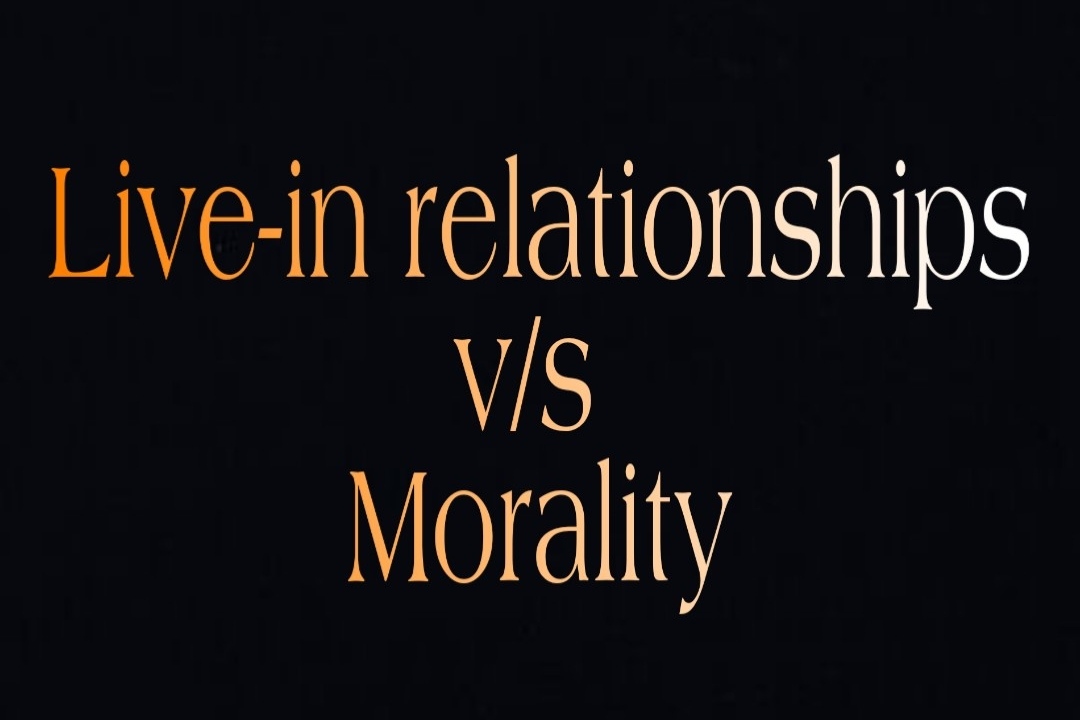Summary
Live-in relationship, that is, living together as a couple without being married to each other has witnessed a drastic change in the way the present generation perceives their relationships. The legal status of live-in relationships in India is unclear, the Supreme Court has ruled that any couple living together for a long term will be presumed as legally married unless proved otherwise. This article tries to figure out the current legal rights arising out of a marriage and live-in relationships.
Introduction
The concept of live-relationship has existed for several years, but earlier people couldn’t reveal their relationship explicitly because it was considered taboo in India. A live-in Relationship is a type of arrangement between two people who decide to live together permanently and support each other both emotionally and physically. The idea behind the live-in concept is that before marrying people want to check the compatibility or they may establish financial security, avoid divorce and see the little differences between living together in a committed relationship and living in a marriage. Live-in relationships are not considered illegal anymore in India.
In 2006, the court in the case of “Lata Singh v. the State of U.P” held that a live-in relationship between two consenting adults of the opposite sex does not amount to any offense under the law. The Supreme Court in the case of “Khushboo vs Kanaimmal and another” held Living together is a right to life and therefore it cannot be held illegal. Before 2018, under Section 497 of the Indian Penal Code, domestic cohabitation of a married or unmarried man with a married woman constituted a criminal offense of “adultery,” for the man only. However, this section was annulled by the Supreme Court of India in the case of “Joseph Shine vs Union of India” in September 2018, as the Court concluded that it was violative of Article 14 of the Constitution of India.
The Protection of Women from Domestic Violence Act, 2005 and ‘Relation in the Nature of Marriage’

Section 2(f) of the DV Act defines a domestic relationship as a relationship in the ‘nature of marriage’ between two people/adults living in a shared household. Section 2(f) of the Domestic Violence Act, 2005 defines domestic relationship as a relationship between two persons who live or have, at any point of time, lived together in a shared household, when they are related by consanguinity, marriage, or through a relationship in the nature of marriage, adoption or are family members living together as a joint family. For the very first time in the Protection of Women from Domestic Violence Act, 2005, the legislature has acknowledged live-in relationships by giving rights and protection to those females who are not legally married, but rather are living with a male individual in a relationship, which is in the idea of marriage, additionally akin to wife, however not equivalent to wife.
Malimath Committee Report
In 2003, the Malimath Committee submitted its report on Reforms of Criminal Justice System, It made several recommendations under the head “offenses against women”. One of its recommendations was to amend Section 125 of CrPC to alter the meaning of “wife”. Owing to this alteration, a revision was made and now the expression “wife” incorporates the ladies who were previously in a live-in relationship and now her accomplice has abandoned her at his will so a lady in a live-in relationship can now get the status of a wife. It also expresses that if a female has been in a live-in relationship for a sensible time, she ought to have the legitimate privileges as that of a spouse and can claim maintenance under Section 125 of CrPC. Where partners live together as husband and wife, a presumption would arise in favor of wedlock.
Difference Between Marriage and Live-in Relationship

Marriage is a social ritual recognized union or contract between spouses that establishes certain rights and legal obligations towards each other. In India, different laws have been framed which lay down the procedures and guidelines for the proper execution of marriages in various religions. Marriage laws have been framed to provide remedies for disputes arising out of wedlock in different religions. Individual Acts were framed for individual religion due to the different customs and traditions followed by each of them. In the case of inter-caste marriages, the Special Marriage Act is applicable. Whereas, a live-in relationship is a relationship where both individuals live in a shared household without being married to each other. It involves continuous cohabitation between the parties without any responsibilities or obligations towards one another
Apart from maintenance under personal laws, Section 125 of the Code of Criminal Procedure, 1973 also provides for maintenance in case a wife is unable to maintain herself. Women can seek additional maintenance apart from the maintenance received by her under any other law as per Section 20(1)(d) of the Protection of Women from Domestic Violence Act (DV Act), 2005. The right to maintenance in a live-in relationship is decided by the court following the Domestic Violence Act, 2005 and the individual facts of the case. The Protection of Women from Domestic Violence Act 2005, provides for the protection and maintenance thereby granting the right of alimony to an aggrieved live-in partner.
Legitimacy and Rights of Children Born from live-in Relationship

Section 16 of the Hindu Marriage Act, 1955 and Section 26 of the Special Marriage Act, confers legitimacy to children born out of the void and voidable marriages. As per sub-section (3) of Section 16 of the Hindu Marriage Act, 1955 and Section 26 of the Special Marriage Act, the right of inheritance of such children is limited to the property of the parents only. Therefore, such children do not have the coparcenary rights in the property of the Hindu undivided family and cannot claim their ancestral property as their parents were not legally wed to each other when they were born.
Landmark Judgements
Payal Sharma vs Nari Niketan, 2001
In this case, the Supreme Court held affirmed that a man and woman could live together upon their willingness even without getting married. Demarcating the difference between law and morality, the Court expressed that even if live-in relationships are regarded as immoral by society, it is neither illegal nor an offense. Two individuals cohabiting and staying in a live-in relationship are not criminal offenders. It clarified that although socially unacceptable in parts of India, live-in relationships are neither a crime nor a sin.
Badri Prasad vs Director of Consolidation, 1978
In this case, the Supreme Court legitimized a 50-year long relationship of a couple. The bench stated that since the couple had lived together for a long time, there was a strong presumption in favor of wedlock and the law favored the legitimacy of their relationship. Additionally, if any third party seeks to disprove such a presumption, a heavy burden lies on them.
Indra Sarma vs V.K.V. Sarma, 2013
In this case, the Supreme Court extensively deliberated a basic framework or rulebook for matters on live-in relationships. While expounding upon the legal sanctity afforded to live-in relationships, the Court referred to Section 2(f) of the Protection of Women from Domestic Violence Act, 2005 that defines the term domestic relationship as “relationship between two persons who live or have, at any point of time, lived together in a shared household, when they are related by consanguinity, marriage, or through a relationship in the nature of marriage, adoption or are family members living together as a joint family”. The bench held that the words ‘relationship in the nature of marriage’ encompasses within itself live-in relationships.
D.Velusamy vs D.Patchaiammal, 2010
In this case, the court held that discussed certain pre-requisites for a live-in relationship to be considered valid. It provides that the couple must hold themselves out to society as being akin to spouses and must be of legal age to marry or qualified to enter into a legal marriage, including being unmarried. It was stated that the couple must have voluntarily cohabited and held themselves out to the world as being akin to spouses for a significant time. The court held that not all relationships will amount to a relationship in the nature of marriage and get the benefit of the Domestic Violence Act.
Abhijit Bhikaseth Auti v. the State of Maharashtra and Other, 2009
In this case, the Supreme Court held that it is not important for a woman to strictly establish the marriage to claim maintenance under Section 125 of CrPC. The court also held that having children is a strong indication of a relationship in the nature of marriage.
Conclusion
The live-in relationship has always been the focus of debates as it was considered taboo. It is not considered an offense anymore as there is no law until the date that prohibits this kind of relationship. To bring justice to those females who are the victims of live-in relationships, the Indian judiciary has played an important role and brought interpretations and made such arrangements valid. To help such women, the court amended Section 125 of CrPC. The word ‘wife’ could treat any woman who has lived with a man for a “reasonable period” as his legitimate wife. As a sequel to this development, the Protection of Women from Domestic Violence Act, 2005, the legislature has acknowledged live-in relationships by giving rights and protection to those females who are not legally married, but rather are living with a male individual in a relationship.
Frequently Asked Questions (FAQs)
What are the legal rights of a woman in a live-in relationship?
An individual in a cohabitation relationship always has the right to her property. This means her income cannot be garnished to cover her partner’s medical expenses or any other financial obligations, like child support payments.
Do live-in partners have any rights in India?
The Court held that a live-in relationship comes within the ambit of the right to life enshrined under Article 21 of the Constitution of India. The Court further held that live-in relationships are permissible and that the act of two adults living together, in any case, cannot be considered illegal or unlawful.
Is a woman living in a live-in relationship is entitled to maintenance?
The Protection of Women from Domestic Violence Act, 2005 provides for the protection, maintenance and right of Palimony (a form of alimony paid to a former partner in a non-marital relationship), to the female partner in a live-in-relationship.
What was held in the case of Indra Sarma vs V.K.V. Sarma case?
In this case, the Supreme Court extensively deliberated a basic framework or rulebook for matters on live-in relationships. While expounding upon the legal sanctity afforded to live-in relationships, the Court referred to Section 2(f) of the Protection of Women from Domestic Violence Act, 2005 that defines the term domestic relationship as “relationship between two persons who live or have, at any point of time, lived together in a shared household, when they are related by consanguinity, marriage, or through a relationship in the nature of marriage, adoption or are family members living together as a joint family”. The bench held that the words ‘relationship in the nature of marriage’ encompasses within itself live-in relationships.
What is the legitimacy and Rights of Children Born from a live-in relationship?
Such children do not have the coparcenary rights in the property of the Hindu undivided family and cannot claim their ancestral property as their parents were not legally wed to each other when they were born.
